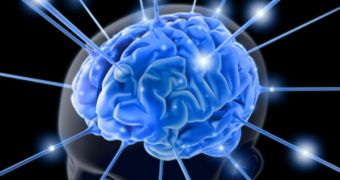In a groundbreaking new discovery, scientists from the United States managed to unlock one of the enduring mysteries surrounding the way the human brain functions. The investigators, based at the Iowa State University (ISU), were recently able to find out that a single protein, called synaptotagmin1 (Syt1), is in charge of releasing neurotransmitters inside the brain. The knowledge could have far-reaching implications for determining new courses of treatment for a host of conditions that exhibit anomalies in neurotransmitter behavior, LiveScience reports.
Researchers say that the new work allows them to gain a newer, deeper perspective into the human brain, and to see this amazing construct like never before. In charge of the investigation was ISU professor of biochemistry, biophysics and molecular biology Yeon-Kyun Shin. He is the expert who managed to identify the role of Syt1 and to determine its effects on neurotransmitters. The latter are chemicals inside the brain that facilitate the passing of electrical impulses between neurons.
They are contained in small vesicles at the ends of axons and dendrites – the structures nerve cells use to connect to each other – and are released when an electrical impulse reaches their location. They then move in the synaptic space, and finally attach themselves to the appropriate receptors on the following neuron. This is naturally done incredibly fast, and it is the phenomenon underlying everything from thought patterns and process to motions. Disorders in the way these chemicals function can lead to the development of a variety of medical disorders, including Parkinson’s disease, schizophrenia, autism, and epilepsy, among many others.
“We are quite excited that for the first time we are showing that Syt1 is really what triggers the signal in the brain. This is a really important thing in terms of neurosciences. This is the heart of the molecular part of the brain function,” explains Shin. “Syt1 was a suspect previously, but people were not able to pinpoint that it’s the real one, even though there were lots and lots of different trials,” the expert concludes. He has been studying the activity of the human brain for the better part of the last 15 years.

 14 DAY TRIAL //
14 DAY TRIAL //